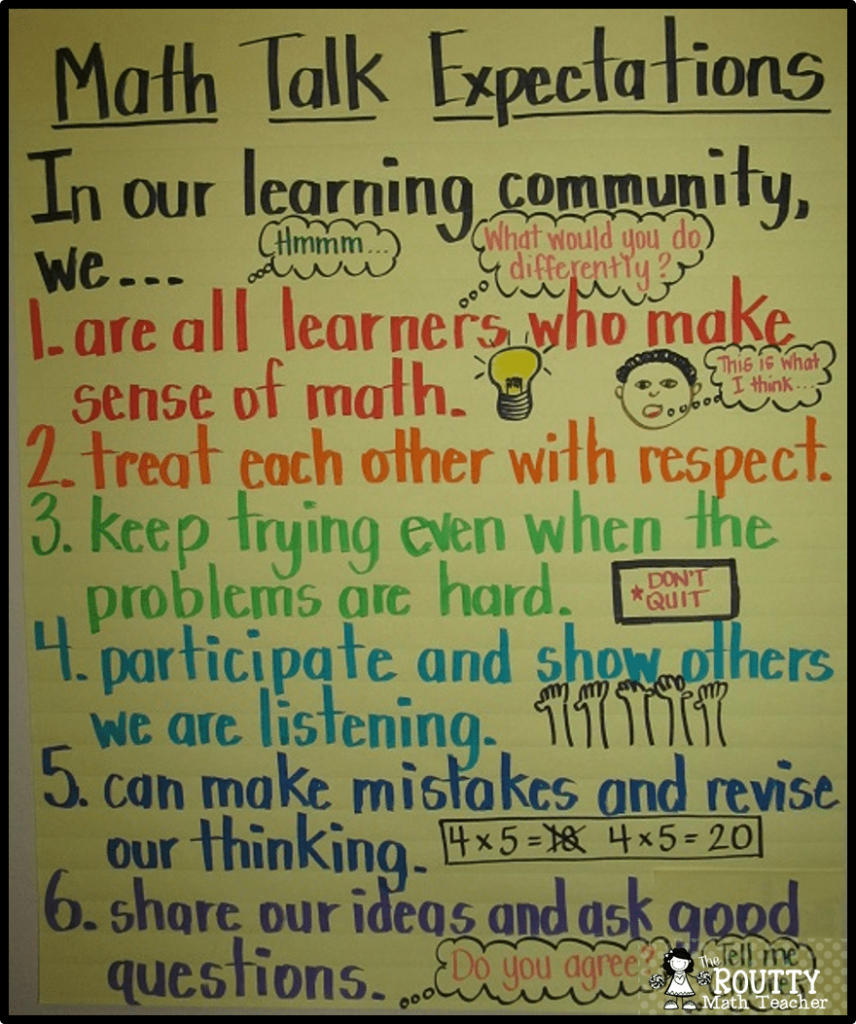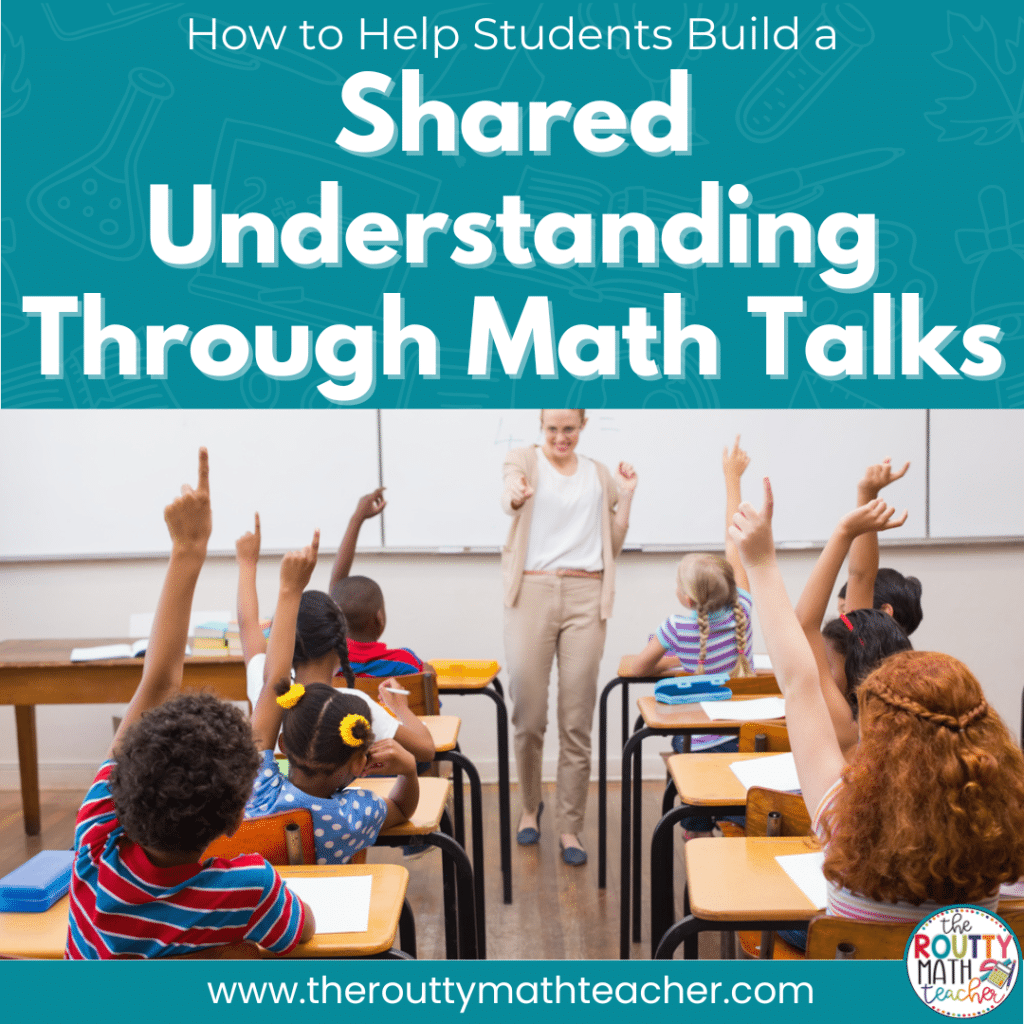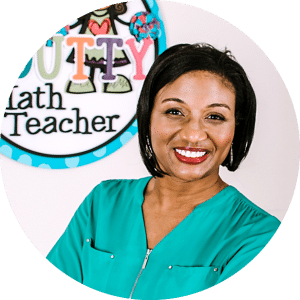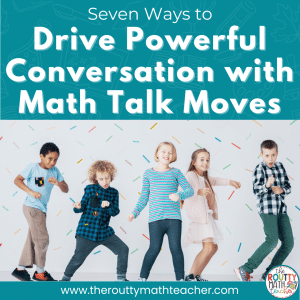All the experts say math talk is essential to building a successful math program. But what is math talk and how is it used in the classroom? In this post, I help teachers understand the purpose of math talk and how to use it effectively in the classroom with students.
The National Council of Teachers of Mathematics states, “Effective teaching of mathematics facilitates discourse among students to build shared understanding of mathematical ideas by analyzing and comparing student approaches and arguments (NCTM, 2014, p. 29).”
But, what is discourse? And, how do we create discourse in the classroom?
The first time I heard the term “mathematical discourse” was in one of my graduate classes.
I have to admit, when I first heard the term, I had no idea what it meant.
In fact, I was a bit embarrassed that I was taking a graduate class in mathematics education and didn’t know what it meant.
I sat, perplexed, during the lesson, trying to listen for clues that might help me decipher the meaning, but nothing helped me unlock the meaning of this unknown word.
At the time, “mathematical discourse” sounded complicated, so I decided to do some research to gain a better understanding. What I discovered is that mathematical discourse is an elegant way to say math talk– a term with which I was very familiar.
So, now that I know that mathematical discourse is a synonym for math talk, I wanted to know more about math talk and how teachers could embed it into their classroom routines on a regular basis.
What is Math Talk?
As stated by NCTM above, effective teaching of mathematics means getting our students to share ideas and compare strategies and solutions.
I know many of you are thinking, “I already do that.” But, how much do you use it and how often? I know I used to be intentional about using math talk to share student strategies during problem solving, but I’m not sure I used it intentionally in other areas of our lessons.
Did you know that math talk is addressed in many state standards too?
Both The Common Core State Standards and the Texas Essential Knowledge and Skills, include competencies related to communicating effectively through mathematical language, justifying solutions, and evaluating the mathematical thinking of others.
What does Math Talk Look Like and Sound Like in the Classroom?
Math talk doesn’t just happen by accident! Just like any other part of our lesson, we have to plan for it. While it can happen during any phase of the lesson cycle, there are specific behaviors that characterize this part of the lesson. Let’s take a look at what math talk looks and sounds like in the classroom.
What are teachers doing?
- Encouraging students to share ideas, solutions, and justifications.
- Intentionally selecting and sequencing student solutions and strategies for discussion.
- Facilitating mathematical discourse while encouraging students to explain and defend their ideas.
- Connecting, comparing, and contrasting student approaches.
- Using “wait time” to support student thinking and encourage deep thought.
- Guiding student responses to stay focused on the topic.
- Using mistakes as springboards for discussion and learning.
What are students doing?
- Sharing ideas, solutions, and strategies with partners, small groups, or the class as a whole.
- Listening to and critiquing the work and reasoning of others, using examples and counterexamples to support their words.
- Asking questions to clarify understanding.
- Trying new approaches.
- Reflecting on the ideas of others.
- Comparing, contrasting, and connecting their ideas with other students’ ideas.
- Working collaboratively, as a community of learners, to support each other.
- Repeating, summarizing, rephrasing, translating, and building on the thinking of others.
Building a Community of Learners
For math talk to be successful, students must understand how to collaborate fairly and hold a respectful exchange of ideas. Before implementing math talk in the classroom, brainstorm a list of classroom norms for how community members will participate and behave during the discussion. See the picture below for an example of math talk norms.

Next Steps
First, review the suggested strategies for building a community of learners in your classroom and create a set of norms for your math community. This will help make math talk much more effective.
Then, check out the following articles to learn more about math talk and how to get started using it in the classroom.
- Seven Ways to Drive Powerful Conversations with Math Talk Moves
- How to Implement the Most Effective Math Talk Examples Using Strategy Sharing
- Promote Everyday Math Talk with Five Simple Math Talk Routines
Also, be sure to download a copy of my Math Talk Moves poster using the form below.
Sound Off!
What does math talk look and sound like in your classroom? Respond in the comments section below.
References
- National Governors Association Center for Best Practices, Council of Chief State School Officers (2010). Common core state standards math. National Governors Association Center for Best Practices, Council of Chief State School Officers, Washington D.C.
- NCTM. (2014). Principles to actions: Ensuring mathematical success for all. Reston, VA : National Council of Teachers of Mathematics.
- Texas essential knowledge and skills for kindergarten-grade 12 : 19 TAC Chapter 111, mathematics. (1997). Austin, Tex. :Texas Education Agency.






